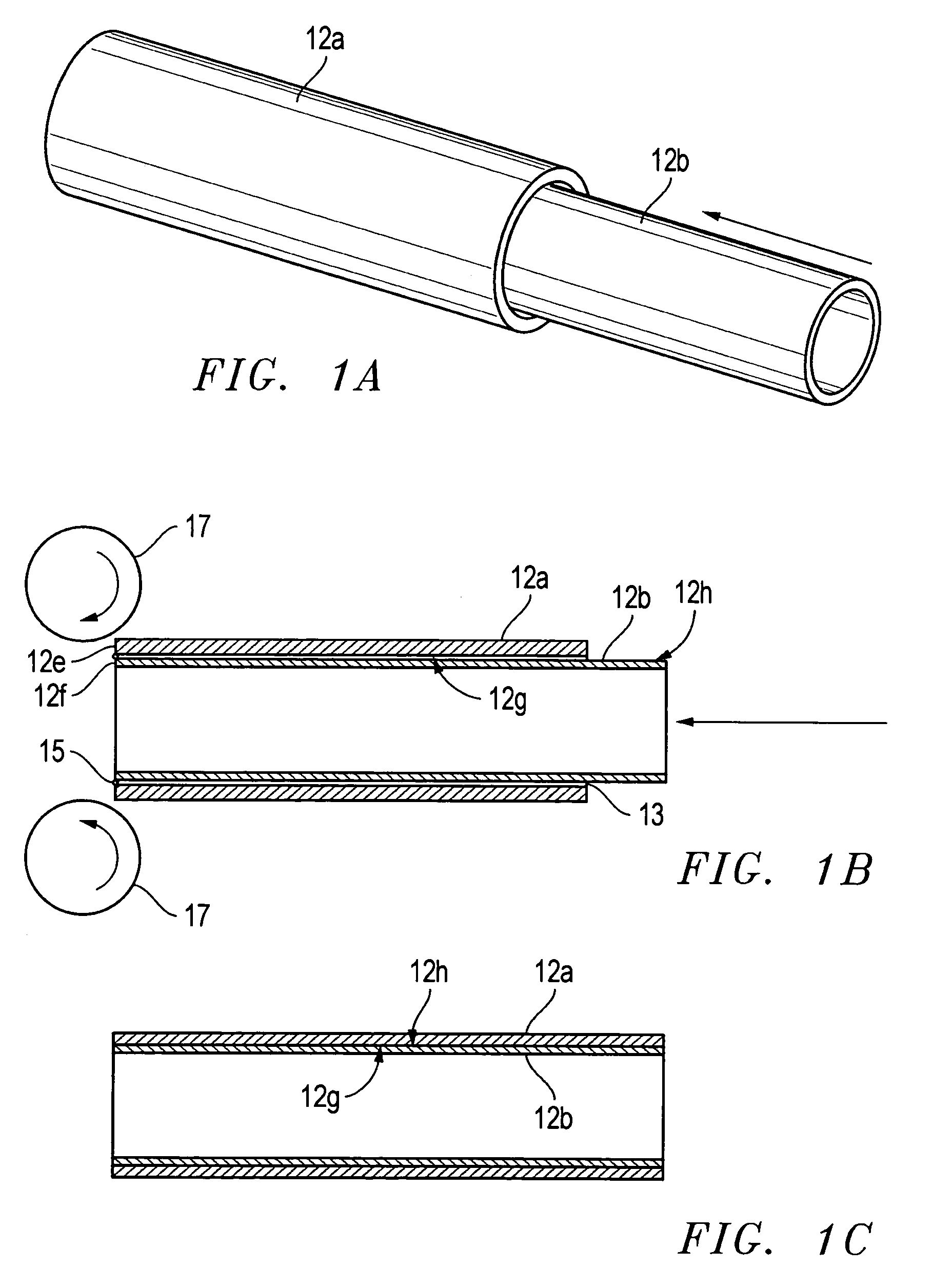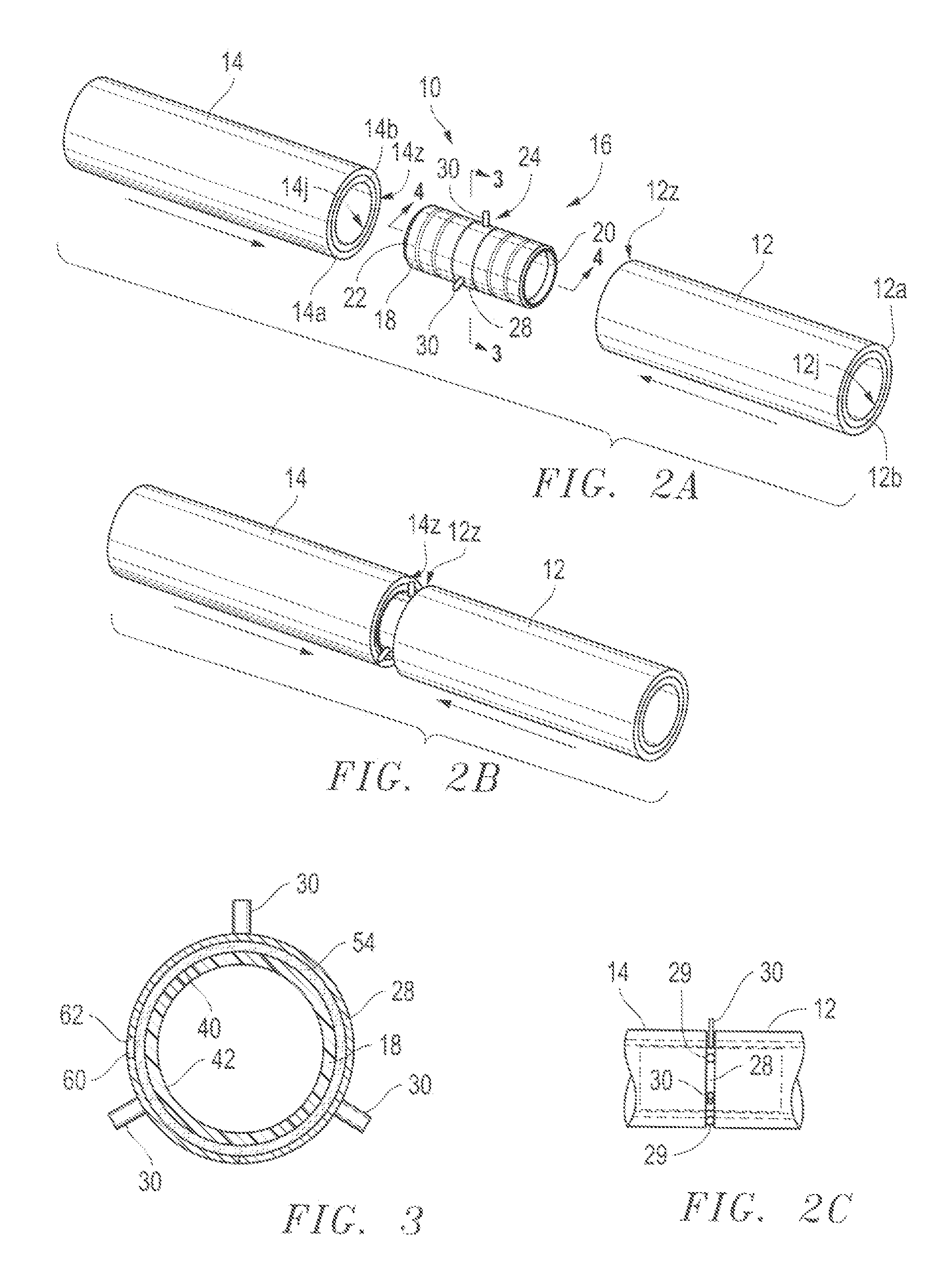Weldable conduit method of forming
a conduit and welding technology, applied in the direction of screw threaded joints, manufacturing tools, instruments, etc., can solve the problems of in-situ re-coating, expensive and time-consuming, and multiple pipe material protection problems, and achieve the effect of inhibiting heat transfer
- Summary
- Abstract
- Description
- Claims
- Application Information
AI Technical Summary
Benefits of technology
Problems solved by technology
Method used
Image
Examples
Embodiment Construction
[0036]The present invention provides for the interconnecting by welding or flanged connection of tubular members employed for transporting corrosive and / or erosive fluids including gases, liquids or slurries. In one aspect, the invention provides a method of forming a weldable tubular member, referred to hereinafter as a “conduit.” With reference first to FIGS. 1A, 1B, and 1C, the inventive method includes the step of positioning a tube 12b formed of a material having desirable properties (e.g., resistance to corrosion and / or erosion) within a pipe 12a formed of a commonly weldable material. The tube 12b is preferably formed of (i.e., includes to a substantial degree) an alloy containing one or more materials selected from the group of chromium, molybdenum, nickel, iron, copper, and titanium, and, in certain embodiments, the tube is formed of an alloy selected from the group of stainless steel, hastelloy, inconel, incoloy, and monel. The pipe 12a is preferably formed of a carbon ste...
PUM
| Property | Measurement | Unit |
|---|---|---|
| lengths | aaaaa | aaaaa |
| lengths | aaaaa | aaaaa |
| lengths | aaaaa | aaaaa |
Abstract
Description
Claims
Application Information
 Login to View More
Login to View More - R&D
- Intellectual Property
- Life Sciences
- Materials
- Tech Scout
- Unparalleled Data Quality
- Higher Quality Content
- 60% Fewer Hallucinations
Browse by: Latest US Patents, China's latest patents, Technical Efficacy Thesaurus, Application Domain, Technology Topic, Popular Technical Reports.
© 2025 PatSnap. All rights reserved.Legal|Privacy policy|Modern Slavery Act Transparency Statement|Sitemap|About US| Contact US: help@patsnap.com



